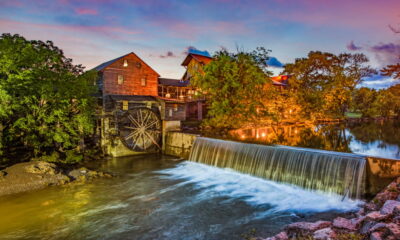

Features
Responsible and independent tour operators: Archipelago Choice
Continuing our series profiling members of the Association of Independent Tour Operators (AITO), Ian Coates, managing director of Archipelago Choice, writes about one of its most popular tourist destinations.
This piece originally featured in B>’s Guide to Sustainable Tourism 2013.
Straddling the mid-Atlantic ridge around 950 miles west of Lisbon lies the stunning Azores archipelago. Often described as the tips of the lost continent of Atlantis, the islands maintain an old world charm that is difficult to find almost anywhere in Europe.
The nine islands of the Azores are spread over 450km and can be divided into three distinct geographical groups: eastern, central and western. The islands are the tips of giant volcanoes which reach up from the ocean floor to a high point of 2351 metres above sea level. They are a real haven in the Atlantic Ocean to transatlantic yachtsmen and also to a vast range of marine life.
The Azores are considered to be one of the premier whale and dolphin watching sites in the world. In the spring it’s possible to observe migrating blue whales; in the summer months there are sperm, fin and beaked whales and throughout the year the islands are home to female sperm whales and their calves. Not only that, but you regularly see bottlenose, common, spotted, Risso’s and striped dolphin around the islands and this is one of the main reasons many people visit the islands.
However, for those who prefer to keep their feet firmly on terra firma, the islands have some wonderful day walks which range from two to six hours and are well within the capability of the moderately fit. Walking is one of the best ways to explore the islands and you’ll be able to witness secluded lagoons as you stroll from one coastal plain to the next, climb Portugal’s highest mountain (Mountt Pico, 2351 metres), sense the tranquillity that surrounds the great crater lakes and see the moonscape results of the most recent Azorean eruption.

A view of Sete Cidades, Portugal.
If your preferred pace is faster, then the Azores offer some wonderful cycle touring. A lovely (gentle) route is a cycle around Pico Island which takes four to seven days and takes in its quiet country roads and magnificent coastal views; where you can stop off at small family run wine co-operatives and visit the fascinating whaling museums.
The Azores are idyllic but they are not a beach destination. If you are drawn towards remote islands where visitors feel unique and special, have an interest in the natural world, and have a curious streak, the Azores could well be the perfect destination.
Ten years ago I was introduced to the Azores by my wife and like most people I had a vague inkling as to where they were, but beyond that they were a bit of a mystery. Looking back to my first visit I distinctly remember two things; the feeling of being somewhere very special due to the lack of tourists and breathtaking scenery, and the surprise of diving into the aquamarine ocean at 8am one October morning expecting an exhilarating dip only to find the water was warm!
One question that is frequently asked of me is, “Do you think there is enough for us to do in the Azores?” Spoilt for choice sums it up. I have visited the Azores every year for the past 10 years with my wife and now my young family and each time we go, whether it’s a holiday or for work, we still find lots of new and exciting things to do.
For more information, visit www.archipelagochoice.com.


 Environment10 months ago
Environment10 months agoAre Polymer Banknotes: an Eco-Friendly Trend or a Groundswell?

 Environment11 months ago
Environment11 months agoEco-Friendly Home Improvements: Top 7 Upgrades for 2025

 Features9 months ago
Features9 months agoEco-Friendly Cryptocurrencies: Sustainable Investment Choices

 Features10 months ago
Features10 months agoEco-Friendly Crypto Traders Must Find the Right Exchange





























